1. Ahlijanian MK, Westenbroek RE, Catterall WA. Subunit structure and localization of dihydropyridine-sensitive calcium channels in mammalian btain, spinal cord, and retina. Neuron. 1990. 4:819–832.

2. Akopian AN, Sivilotti L, Wood JNA. tetrodotoxin-resistant voltage-gated sodium channel expressed by sensory neurons. Nature. 1996. 379:257–262.

3. Alonso G, Widmer H. Clustering of Kv4.2 potassium channels in Phostsy.

4. Barry DM, Xu H, Schuessler RB, Nerbonne JM. Functional knockout of the transient outward current, long-QT syndrome, and cardiac remodeling in mice expressing a dominant-negative Kv4 alpha subunit. Circ Res. 1998. 83:560–567.

5. Bean BP. Classes of calcium channels in vertebrate cells. Annu Rev Physiol. 1989. 51:367–384.

6. Bignami A. Neuron-Glia Interrelations During Phylogeny. I. Phylogeny and Ontogeny of Glial Cells. 1995. New Jersey: Humanna;3–39.
7. Bossu JL, Feltz A. Patch-clamp study of the tetrodotoxin-resistant sodium current in group C sensory neurones. Neurosci Lett. 1984. 51:241–246.

8. Brew H, Gray PT, Mobbs P. Endfeet of retinal glial cells have higher densities of ion channels that mediate K
+ buffering. Nature. 1986. 324:466–468.

9. Brismar T, Collins VP. Inward rectifying potassium channels in human malignant glioma cells. Brain Res. 1989. 480:249–258.

10. Caffrey JM, Eng DL, Black JA, Waxman SG, Kocsis JD. Three types of sodium channels in adult rat dorsal root ganglion neurons. Brain Res. 1992. 592:283–297.

11. Choi DW. Calcium-mediated neurotoxicity : relationship to specific channel types and role in ischemic damage. Trends Neurosci. 1988. 11:465–469.

12. Clapham DE. Calcium signaling. Cell. 2007. 131:1047–1058.

13. Cohen SA, Barchi RL. Voltage-dependent sodium channels. Int Rev Cytol. 1993. 137:55–103.
14. Cohen MW, Jones OT, Angelides KJ. Distribution of Ca
2+ channels on frog motor nerve terminals revealed by fluorescent ω-conotoxin. J Neurosci. 1991. 11:1032–1039. Cooper, K., Rae, J. L., AND Deway, J. Inwardly rectifying potassium current in mammalian lens epithelial cells. Am J Physiol. 261 : C115-23.

15. Doughty JM, Barnes-Davies M, Rusznak Z, Harasztosi C, Forsythe ID. Constructing Ca
2+ channel subtypes at cell bodies and synaptic terminals of rat anterioventral cochlear bushy neurons. J Physiol. 1998. 512:365–376. Dunlap, K., Luebke, J. I., AND Turner, T. J. Exocytotic Ca2+ channels in mammalian central neurons. Trends Neurosci. 18 : 89-98, 1995.

16. Elliott AA, Elliott JR. Characterization of TTX-sensitive and TTX-resistant sodium currents in small cells from adult rat dorsal root ganglia. J Physiol. 1993. 463:39–56.

17. Fedulova SA, Kostyuk PG, Veselovsky NS. Ionic mechanisms of electrical excitability in rat sensory neurons during postnatal ontogenesis. Neuroscience. 1991. 41:303–309.
18. Harper AA, Lawson SN. Conduction velocity is related to morphological cell type in rat dorsal root ganglion neurones. J Physiol. 1985a. 359:31–46.

19. Harper AA, Lawson SN. Electrical properties of rat dorsal root ganglion neurons with different peripheral nerve conduction velocities. J Physiol. 1985b. 359:47–63.

20. Haydon PG, Henderson E, Stanley E. Localization of individual calcium channels at the release face of a presynaptic nerve terminal. Neuron. 1994. 13:1275–1280.

21. Hille B. Ionic channels of Excitable Membranes. 1992. Sunderland, MA: Sinauer.
22. Hirning LD, Fox AP, McCleskey EW, Olivera BM, Thayer SA, Miller RJ, Tsien RW. Dominant role of N-type Ca
2+ channels in evoked release of norepinephrine from sympathetic neurons. Science. 1988. 239:57–61.

23. Hodgkin AL, Huxley AF. Currents carried by sodium and potassium ions through the membrane of the giant axon of Loligo. J Physiol. 1952. 116:449–472.
24. Hoffman DA, Magee JC, Colbert CM, Johnston D. K
+ channel regulation of signal propagation in dendrites of hippocampal pyramidal neurons. Nature. 1997. 387:869–875.

25. Holz GG, Dunlap K, Kream RM. Characterization of the electrically evoked release of substance P from dorsal root ganglion neurons : methods and dihydropyridine sensitivity. J Neurosci. 1988. 8:463–471.

26. Ishii M, Horio Y, Tada Y, Hibino H, Inanobe A, Ito M, Yamada M, Gotow T, Uchiyama Y, Kurachi Y. Expression and clustered distribution of an inwardly rectifying potassium channel, KAB-2/Kir4.1, on mammalian retinal Muller cell membrane: the regulation by insulin and laminin signals. J Neurosci. 1997. 17:7725–7735.

27. Jan LY, Jan YN. Cloned potassium channels from eukaryotes and prokaryotes. Annu Rev Neurosci. 1997. 20:91–123.

28. Josephson IR. Properties of inwardly rectifying K
+ channels in venricular myocytes. Mol Cell Biochem. 1988. 80:21–26.

29. Kaczorowski GJ, Knaus HG, Leonard RJ, Mcmanus OB, Garcia ML. High-conductance calcium-activated potassium channels : structure, pharmacology, and function. J Bioenerg Biomembr. 1996. 28:255–267.

30. Kostyuk PG, Veselovsky NS, Fedulova SA, Tsyndrenko AY. Ionic currents in the somatic membrane of rat dorsal root ganglion neurons - I. Sodium currents. Neuroscience. 1981. 6:2423–2430.

31. Kusaks S, Puro DG. Intracellular AYP activates inwardly rectifying K+ channels in human and monkey retinal Muller (glial) cells. J Physiol. 1997. 500:593–604.
32. Llinas R, et al. Blocking and isolation of a calcium channel from neurons in mammals and cephalopods utilizing a toxin fraction (FIX) from the funnel web spider poison. Proc Natl Acad Sci USA. 1989. 86:1689–1693.
33. Maletic-Savatic M, Lenn NJ, TRIMMER JS. Differential spatiotemporal expression of K
+ channel polypeptides in rat hippocampal neurons developing in situ and in vitro. J Neurosci. 1995. 15:3840–3851.

34. Marty A. The physiological role of calcium-dependent channels. Trends Neurosci. 1989. 12:420–424.

35. McCleskey EW. Calcium channels : Celluar roles and molecular mechanisms. Curr Opin Neurobiol. 1994. 4:304–312.
36. Mclarnon JG, Kim SU. Existence of inward potassium currents in adult human oligodendrocytes. Neurosci Lett. 1989. 101:107–112.

37. McLean MJ, Bennet PB, Thomas RM. Subtypes of dorsal root ganglion neurons based on different inward currents as measured by whole cell voltage clamp. Mol Cell Biochem. 1988. 80:94–107.

38. Miller RJ. Receptor-mediated regulation of calcium channels and neurotransmitter release. FASEB J. 1990. 4:3291–3299.

39. Mills LR, Niesen CE, So AP, Carlen PL, Spigelman I, Jones OT. N-type Ca
2+ channels are located on somata, dendrites and a subpopulation of dendritic spines on live hippocampal pyramidal neurons. J Neurosci. 1994. 14:6815–6824.

40. Mintz I, et al. P type calcium channels in rat central and peripheral neurons. Neuron. 1992. 9:85–95.

41. Nelson MT, Cheng H, Rubart M, Santana LF, Bonev AD, Knot HJ, Lederer WJ. Relaxation of arterial smooth muscle by calcium sparks. Science. 1995. 270:633–637.

42. Newman EA. Inward-rectifying potassium channels in retinal glial (Muller) cells. J Neurosci. 1993. 13:3333–3345.

43. Nilius B, Schwarz G, Droogmans G. Modulation by histamine of an inwardly rectifying potassium channel in huma endotherial cells. J Physiol. 1993. 472:359–371.

44. Nishizuka Y. The role of protein kinase C in cell surface signal transduction and tumour promotion. Nature. 1984. 308:693–698.

45. Ogata N, Tatebayashi H. Kinetic analysis of two types of Na+ channels in rat dorsal root ganglia. J Physiol. 1993. 466:9–37.
46. Ogata N, Tatebayashi H. Ontogenic development of the TTX-sensitive and TTX-insensitive Na
+ channels in neurons of the rat dorsal root ganglia. Brain Res Dev Brain Res. 1992a. 65:93–100.

47. Ogata N, Tatebayashi H. Slow inactivation of tetrodotoxin-insensitive Na
+ channels in neurons of rat dorsal root ganglia. J Membr Biol. 1992b. 129:71–80.

48. Perney TM, Hirning LD, Leeman SE, Miller RJ. Multiple calcium channels mediate neurotransmitter release from peripheral neurons. Proc Natl Acad Sci U S A. 1986. 83:6656–6659.

49. Puil E, Gimbarzevsky B, Miura RM. Quantification of membrane properties of trigeminal root gangion neurons in guinea pigs. J Neurophysiol. 1986. 55:995–1016.

50. Randall A, Tsien R. Pharmacological dissection of multiple types of calcium channel currents in rat cerebellar granule neurons. J Neurosci. 1992. 15(4):2995–3012.

51. Regehr WG, Mintz IM. Participation of multiple calcium channel types in transmission at single climbing fiber to Purkinje cell synapses. Neuron. 1900. 12:605–613.

52. Robitaille R, Adler EM, Charlton MP. Strategic location of calcium channels at transmitter release sites of frog neuromuscular synapes. Neuron. 1990. 5:773–779.

53. Roy ML, Narahashi T. Differential properties of tetrodotoxin-sensitive and tetrodotoxin -resistant sodium channels in rat dorsal root ganglion neurons. J Neurosci. 1992. 12:2104–2111.

54. Schwartz A, Palti Y, Meiri H. Structural and developmental differences between three types of Na channels in dorsal root ganglion cells of newborn rats. J Membr Biol. 1990. 116:117–128.

55. Serodio P, Vega-SaenzDeMiera E, Rudy B. Cloning of a novel component of A-type K
+ channels operating at subthreshold potentials with unique expression in heart and brain. J Neurophysiol. 1900. 75:2174–2179.

56. Sheng M, Tsaur MI, Jan YN. Subcellular segregation of two A-type K+ channel proteins in rat central neurons. Neuron. 1992. 2:271–284.
57. Silver MR, Decoursey TE. Intinsic gating of inward rectifier in bovine pulmonary artery endothelial cells in the presence or absence of internal Mg
2+. J Gen Physiol. 1990. 96:109–133.

58. Song WJ, Tkatch T, Baranauskas G, IChinohe N, Kitai ST, Surmeier DJ. Somatodenditic depolarization-activated potassium currents in rat neostriatal cholinergic interneurons are predominantly of the A type and attributable to coexpression of Kv42 and Kv 41 subunits. J Neurosci. 1998. 18:3124–3137.

59. Stanley EF. The calcium channel and the organization of the presynaptic transmitter release face. Trends Neurosci. 1997. 20:404–409.

60. Tkatch T, Baranauskas G, Surmerier DJ. Kv4.2 mRNA abundance and A-type K(+) current amplitude are linearly related in basal ganglia and basal forebrain neurons. J Neurosci. 2000. 20:579–588.

61. Torri-Tarelli F, Passafaro M, Clementi F, Sher M. Presynaptic localization of omegaconotoxin-sensitive calcium channels at the frog neuromuscular junction. Brain Res. 1991. 547:331–334.
62. Tsien RW, Lipscombe D, Mandison DV, Bley K, Fox A. Reflections on Ca2+ channel diversity, 1984-1994. Trends Neurosci. 1995. 18:52–54.
63. Tsien RW, Lipscomble D, Mandison DV, Bley K, Fox A. Multiple types of neuronal calcium channels and their selective modulation. Trends Neurosci. 1988. 11:431–438.

64. Vergara C, Latorre R, Marrion NV, Adelman JP. Calcium-activated potassium channels. Curr Opin Neurobiol. 1998. 8:321–329.

65. Westenbroek RE, Ahlijanian MK, Catterall WA. Clustering of L-type Ca
2+ channels at the base of major dendrites in hippocampal pyramidal neurons. Nature. 1990. 347:281–284.

66. Westenbroek RE, Sakurai T, Elliot EM, et al. Immunochemical identification and subcellular distribution of the alpha 1A subunits of brain calcium channels. J Neurosci. 1995. 15:6403–6418.

67. Wong RKS, Prince DA. Participation of calcium spikes during intrinsic burst firing in hippocampal neurons. Brain Research. 1978. 159:385–390.

68. Wu LG, Westenbroek RE, Borst JGG, Catteral WA, Sakmann B. Calcium channel types with distinct presynaptic localization couple differentially to transmitter release in single calyx-type synapses. J Neurosci. 1999. 19:726–736.





 PDF
PDF ePub
ePub Citation
Citation Print
Print


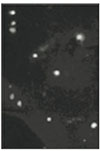

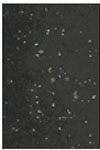

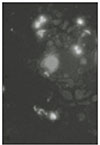
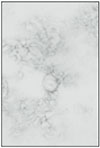
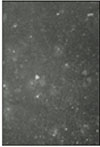

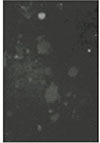
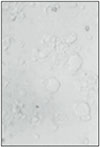
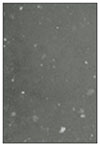

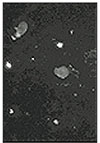

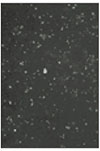

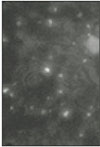

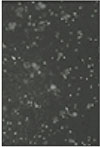

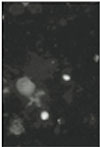
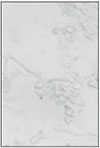
 XML Download
XML Download